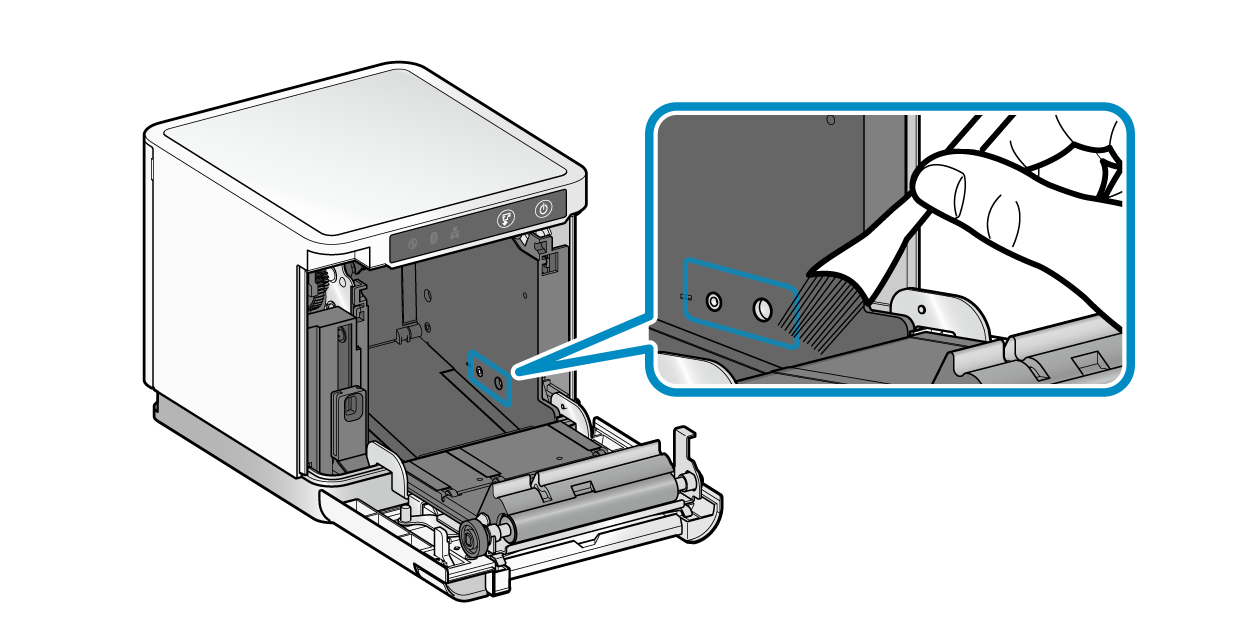Daily Maintenance
To enable comfortable and safe use, conduct maintenance periodically. Before conducting maintenance, take note of the information in Safety Information - Maintenance.
Printer's external maintenance
1. Turn power off
- Turn the power off, and disconnect the power plug of the AC adapter from the electrical outlet.
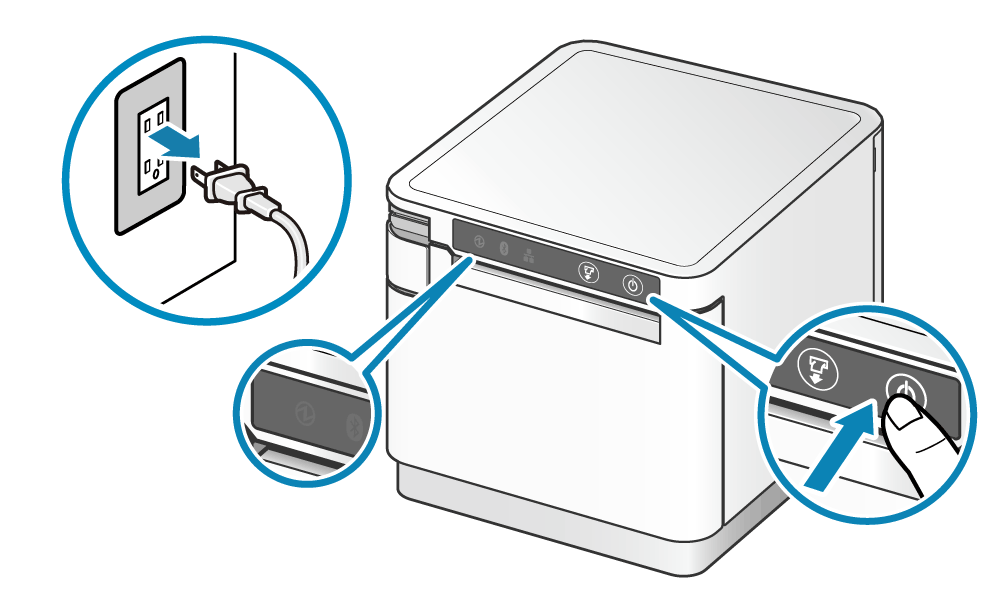
External view
- Wipe off the dirt on the plastic section using a soft, dry and clean cloth.
- If it is very dirty, soak a soft cloth in water containing a very small amount of neutral detergent, completely squeeze the cloth and gently wipe off the dirt. Wipe off any moisture using a soft, dry cloth.
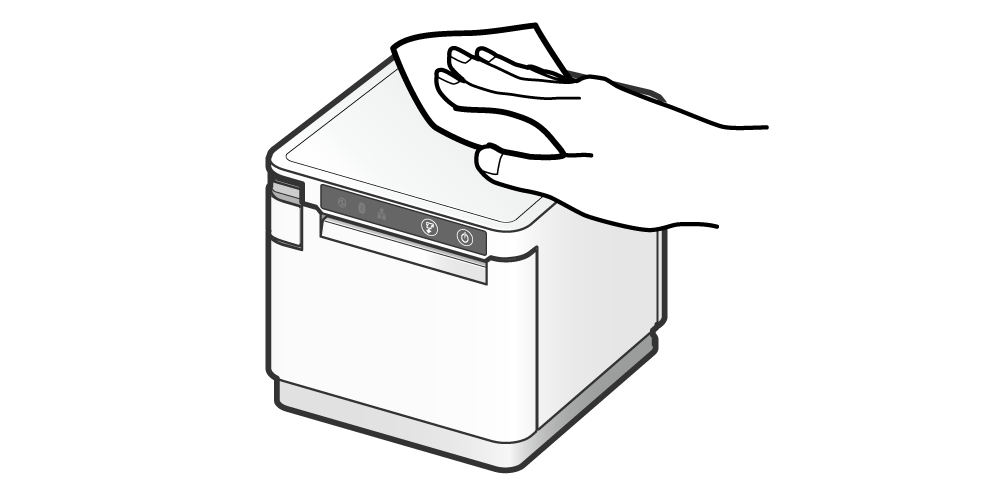
Caution
- Do not use neutral detergent without diluting it. Otherwise, it will cause plastic parts to change color or deteriorate.
Interior maintenance
1. Turn power off
- Turn the power off, and disconnect the power plug of the AC adapter from the electrical outlet.

2. Open printer cover
- Pull the opening lever
 to open the printer cover
to open the printer cover  .
.
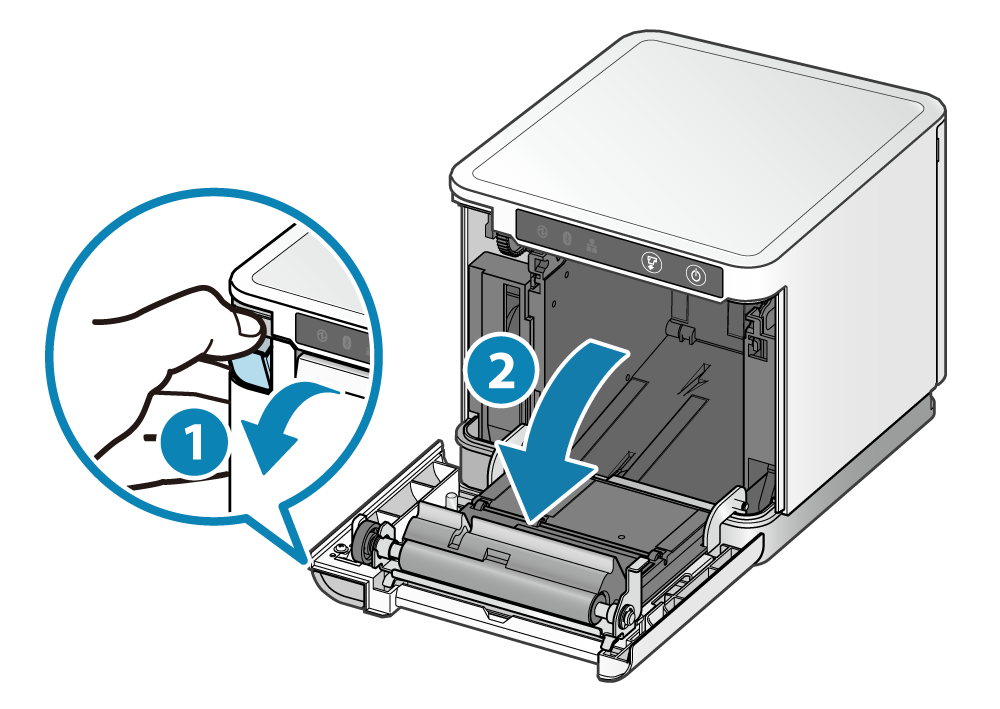
Thermal head
- Put an alcohol solvent (ethanol, isopropyl alcohol) on a cotton swab and wipe the thermal area of the head.
- Remove the blackened paper powder from the surface of the thermal head.
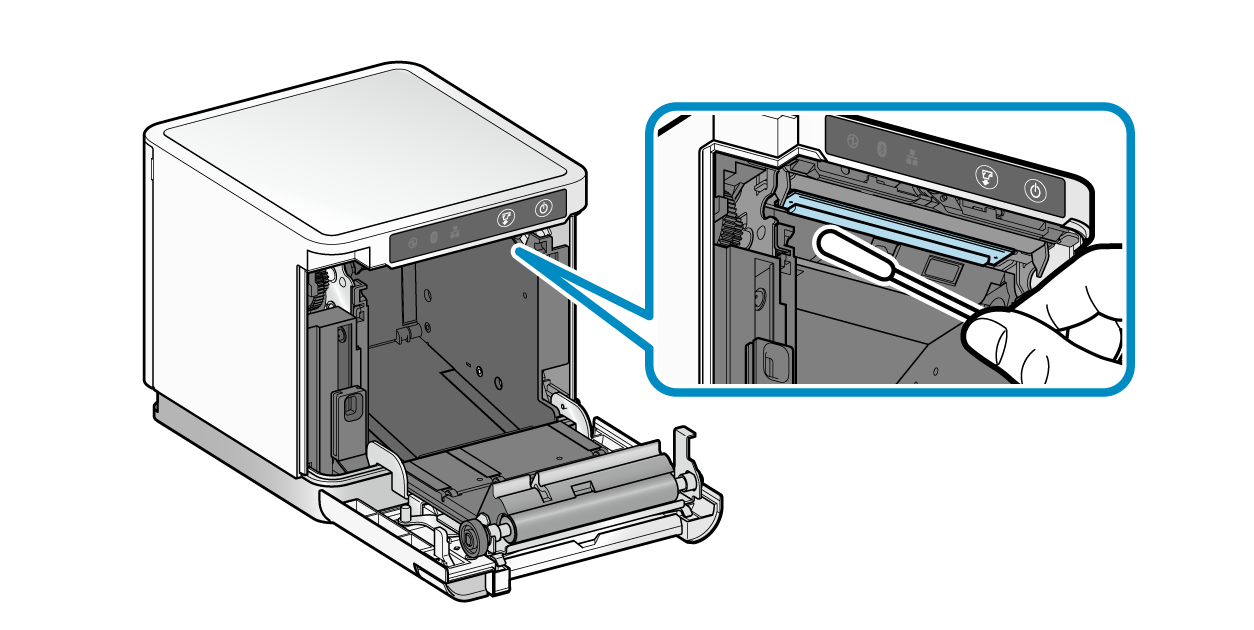
Caution
- The thermal head is a part that can easily be damaged. Use a soft cloth and carefully clean the head so it does not get any scratches.
- Do not clean the thermal head immediately after printing when it is still hot.
- There is risk that static electricity may damage the head after the thermal head is cleaned so be careful about static electricity.
- Turn the power on only after the alcohol has completely dried.
Rubber roller
- Wipe the debris on the rubber roller with a dry soft cloth.
- Rotate the rubber roller while cleaning to make sure that the whole roller is cleaned.
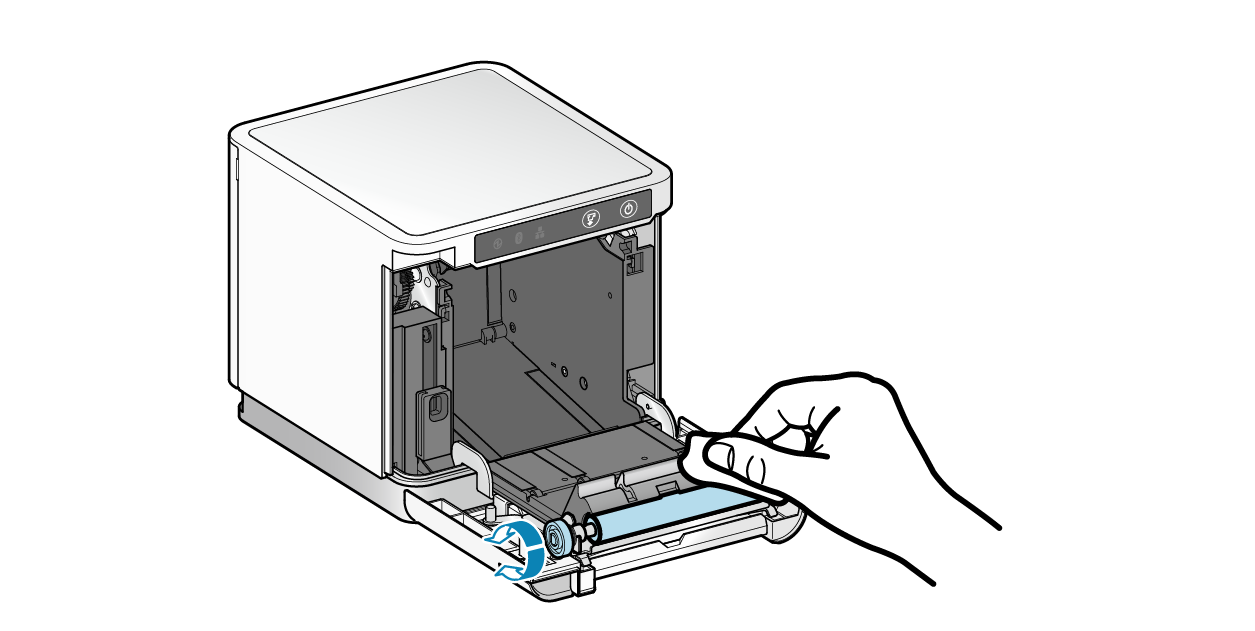
Paper roll storage space
- Remove any debris, dust and paper particles from the paper holder as well as any other objects that may have accumulated.
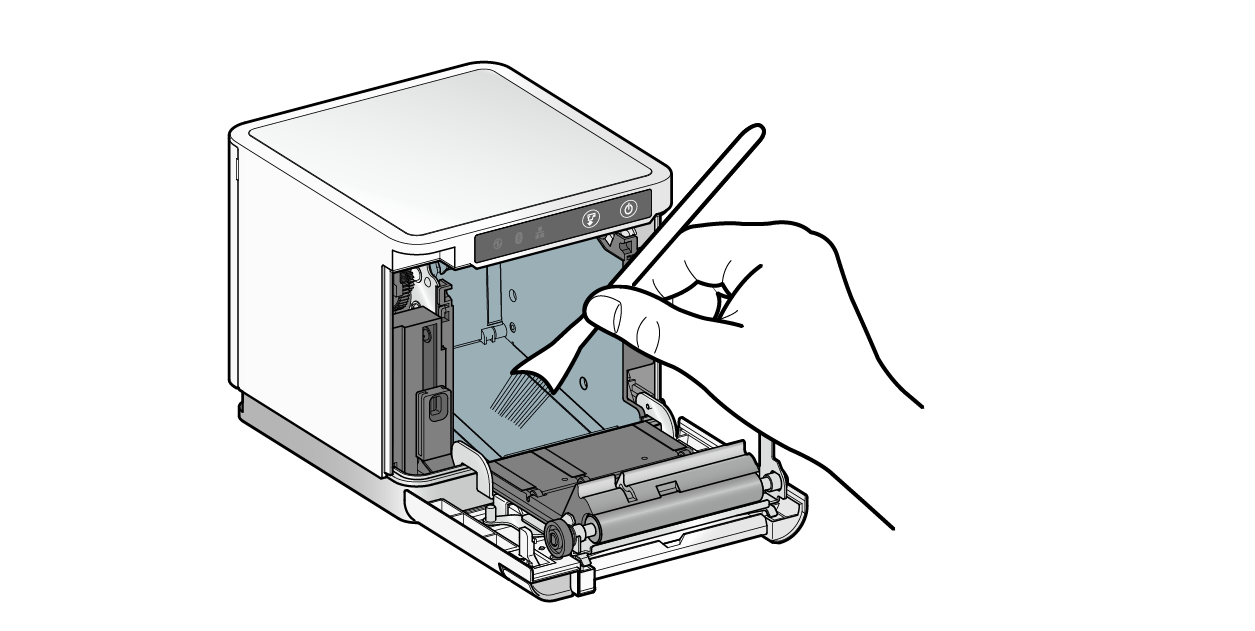
Near end sensor
- Remove any debris, dust and paper particles from the paper holder as well as any other objects that may have accumulated.
